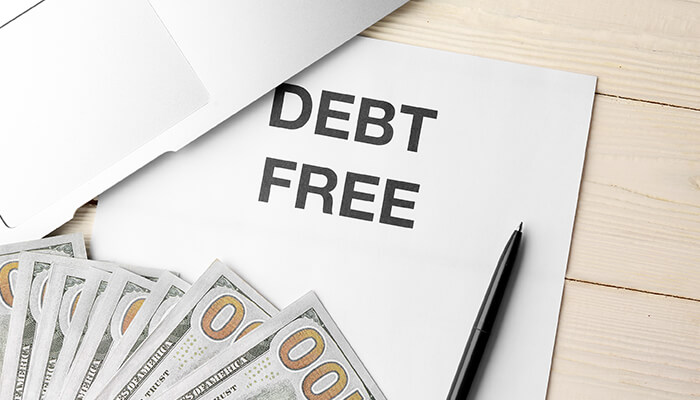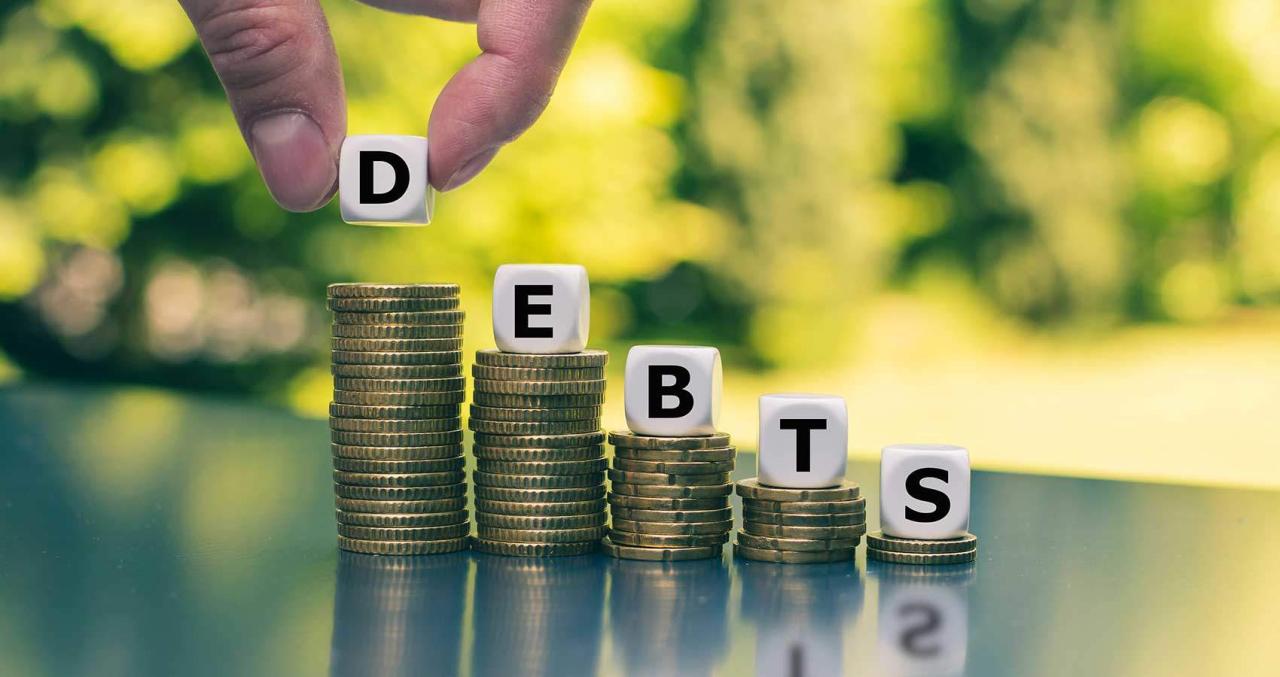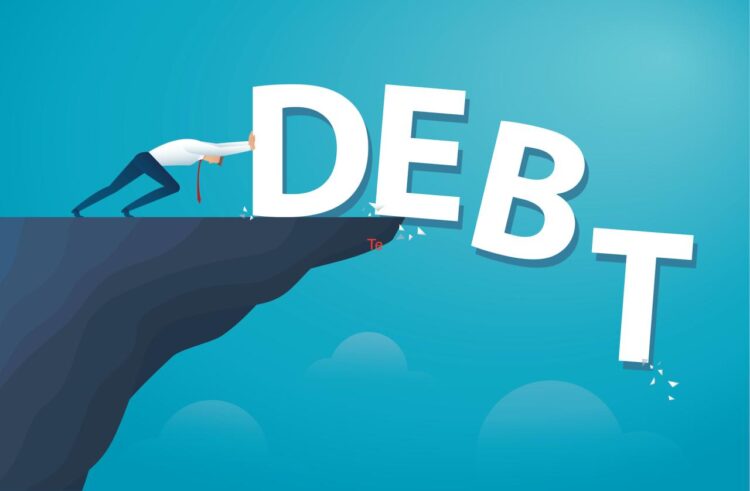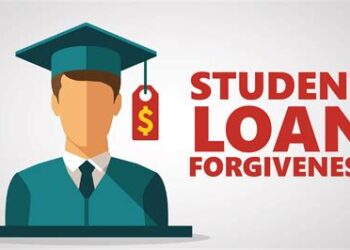The burden of debt can feel like a heavy chain, limiting financial freedom, stifling opportunities, and creating immense stress. For millions, the dream of debt-free living isn’t just a fantasy; it’s a tangible goal that, once achieved, unlocks a world of possibilities. It means more disposable income, greater financial security, and the peace of mind that comes from knowing you’re in control of your money, not the other way around. This extensive guide will delve deep into practical, actionable strategies to eliminate debt, maintain a debt-free lifestyle, and build a robust financial future. We’ll explore everything from understanding different types of debt to implementing powerful repayment methods and cultivating habits that support long-term financial independence.
The Landscape of Debt

Before embarking on a debt-free journey, it’s crucial to understand the different types of debt, as each may require a slightly different approach. Recognizing the nature of your debt is the first step toward conquering it.
A. High-Interest Consumer Debt:
A.1. Credit Card Debt: This is arguably the most insidious form of debt due to its exceptionally high-interest rates, often ranging from 15% to 30% or more. Credit card debt can quickly spiral out of control, making it incredibly difficult to pay down the principal balance. It’s unsecured debt, meaning it’s not backed by any collateral. The ease of access and the allure of instant gratification often lead individuals into this trap. A major focus of debt-free strategies often begins here.
A.2. Personal Loans: These are typically unsecured loans with fixed interest rates, often used for consolidating other debts, home improvements, or unexpected expenses. While their rates are usually lower than credit cards, they can still be substantial, especially for those with lower credit scores.
A.3. Payday Loans and Title Loans: These are extremely high-cost, short-term loans designed to bridge the gap until your next paycheck. They come with exorbitant fees and interest rates that can trap borrowers in a vicious cycle of debt. They should be avoided at all costs.
B. Secured Debt:
B.1. Mortgages: A mortgage is a loan used to purchase real estate, secured by the property itself. While a large debt, it’s often considered “good debt” if managed wisely, as the asset (your home) typically appreciates in value over time. Interest rates are generally much lower than consumer debt. Strategies here focus on accelerating payments or refinancing for better terms.
B.2. Auto Loans: Used to finance vehicle purchases, auto loans are secured by the car. Cars are depreciating assets, meaning they lose value over time, so it’s wise to pay off auto loans as quickly as possible to avoid being “upside down” (owing more than the car is worth).
C. Student Loan Debt:
Student loans are often a significant burden for many, especially those in higher education. They can be federal or private, with varying interest rates and repayment terms. While essential for education and career advancement, managing them effectively is key. They often have more flexible repayment options, such as income-driven repayment plans, but they are generally not dischargeable in bankruptcy, making them a persistent obligation.
D. Medical Debt:
Unexpected medical emergencies can lead to substantial medical debt, even for those with insurance. These often carry lower interest rates or can be negotiated, but they can still be a significant financial strain.
The Setting the Stage for Debt Elimination
Before you can effectively tackle debt, you need to lay a solid foundation. This involves understanding your current financial situation and committing to a new mindset.
A. Financial Self-Assessment: Know Your Numbers:
A.1. List All Debts: Create a comprehensive list of every single debt you owe. Include the creditor’s name, the outstanding balance, the interest rate, the minimum monthly payment, and the due date. This might be a daunting task, but it’s crucial for gaining clarity. Use a spreadsheet or a dedicated app.
A.2. Calculate Total Income: Accurately determine your net monthly income (after taxes and deductions). Include all sources of income, not just your primary job.
A.3. Track Every Expense: For at least a month, meticulously track every dollar you spend. This will reveal where your money is actually going and highlight areas where you can cut back. Use budgeting apps, a notebook, or a simple spreadsheet. Many people are shocked to find out how much they spend on discretionary items.
B. Build an Emergency Fund (Mini):
Before aggressively paying down debt, aim to save a small emergency fund, typically $500 to $1,000. This acts as a buffer for unexpected expenses (e.g., car repair, medical co-pay) and prevents you from resorting to credit cards or other debt when emergencies arise. It’s a foundational step that provides a crucial sense of security.
C. Cut Up Credit Cards (Strategically):
If credit card debt is a problem, physically cutting up your credit cards (or freezing them in a block of ice) can be a powerful symbolic and practical step. This prevents new debt accumulation. Ensure you keep one for true emergencies or for rebuilding credit once debt-free, but only if you trust yourself not to use it. Many recommend keeping one credit card with a low limit for online purchases and emergencies, but only if you can pay it off in full every month.
D. Create a Detailed Budget:
Based on your income and expense tracking, create a realistic and disciplined budget. Allocate funds for essential expenses (housing, food, transportation, utilities) and then designate a significant portion for debt repayment. Be ruthless in cutting discretionary spending during this phase. The “zero-based budget” approach, where every dollar has a job, can be particularly effective.
E. Set Clear, Achievable Goals:
Define specific, measurable, achievable, relevant, and time-bound (SMART) goals for your debt repayment. For example, “I will pay off $X of credit card debt by [Date]” or “I will be completely debt-free within [Number] years.” Writing down your goals makes them more tangible and motivates you.
The Powerful Debt Repayment Strategies

Once your foundation is set, it’s time to implement aggressive repayment strategies. Consistency and focus are key here.
A. The Debt Snowball Method:
A.1. How it Works: This method, popularized by Dave Ramsey, focuses on psychological wins. You list all your debts from smallest balance to largest, regardless of interest rate. You pay the minimum on all debts except the smallest one, on which you pay as much extra as possible.
A.2. The Momentum: Once the smallest debt is paid off, you take the money you were paying on it and add it to the payment of the next smallest debt. This creates a “snowball” effect, where your payments grow larger and larger as each debt is eliminated, providing immense motivation.
A.3. Best For: Those who need psychological wins to stay motivated. Seeing debts disappear quickly can prevent burnout.
B. The Debt Avalanche Method:
B.1. How it Works: With this method, you list all your debts from highest interest rate to lowest, regardless of the balance. You pay the minimum on all debts except the one with the highest interest rate, on which you pay as much extra as possible.
B.2. The Savings: This method saves you the most money in interest over the long run because you’re tackling the most expensive debt first. It’s mathematically the most efficient approach.
B.3. Best For: Those who are disciplined and prioritize saving money on interest.
C. Balance Transfer Strategy:
C.1. Consolidating Debt: If you have high-interest credit card debt, consider a balance transfer to a new credit card with a 0% introductory APR. This can give you a window (typically 12-18 months) to pay down the principal without accruing interest.
C.2. Crucial Warning: This strategy is effective only if you commit to paying off the transferred balance before the promotional period ends. Do not use the old credit cards, and have a solid repayment plan in place. If you don’t pay it off, you’ll be hit with deferred interest or a high regular APR.
C.3. Check Fees: Be aware of balance transfer fees, which are usually 3-5% of the transferred amount. Factor this into your decision.
D. Debt Consolidation Loans:
D.1. Simplifying Payments: A debt consolidation loan combines multiple debts (e.g., credit cards, personal loans) into a single loan, often with a lower interest rate and a fixed monthly payment. This simplifies your finances and can reduce your overall interest payments.
D.2. Considerations: Look for a reputable lender with a good interest rate. Ensure the new loan doesn’t extend your repayment period unnecessarily, which could end up costing you more in the long run despite a lower monthly payment. This option is best for those with a good credit score who can secure a favorable rate.
E. Negotiating with Creditors:
If you’re struggling to make minimum payments, don’t shy away from contacting your creditors. They may be willing to:
E.1. Lower Interest Rates: Ask for a reduced interest rate, especially if you have a good payment history or explain your hardship.
E.2. Set Up a Payment Plan: They might offer a more manageable payment plan.
E.3. Settle for Less: In extreme cases (e.g., if you’re facing bankruptcy), creditors might agree to settle your debt for less than the full amount. Be aware that debt settlement can negatively impact your credit score.
F. Increasing Income (Temporarily or Permanently):
While cutting expenses is vital, increasing your income can dramatically accelerate your debt repayment. Consider:
F.1. Side Hustles: Freelancing, delivering food, driving for ride-sharing apps, selling items online, or taking on extra shifts at work.
F.2. Selling Unused Items: Declutter your home and sell items you no longer need on platforms like Facebook Marketplace, eBay, or local consignment shops.
F.3. Temporary Second Job: Even a temporary second job for a few months can provide a significant boost to your debt repayment efforts. Every extra dollar you can throw at your debt reduces the principal faster.
F.4. Negotiating a Raise: If appropriate, negotiate for a raise at your current job based on your performance and market value.
G. Strategic Use of Windfalls:
Any unexpected money – a tax refund, a bonus, an inheritance, or a work bonus – should be primarily allocated to debt repayment. Resist the urge to splurge. These windfalls can provide a massive boost to your debt-free journey.
Applying Debt-Free Habits
Eliminating debt is a huge accomplishment, but staying debt-free requires a shift in mindset and the cultivation of sustainable financial habits.
A. Maintain a Robust Emergency Fund:
Once your consumer debt is eliminated, pivot your focus to building a larger, fully funded emergency fund (typically 3-6 months of essential living expenses). This is your ultimate protection against future debt, ensuring unexpected job loss, medical bills, or major home repairs don’t push you back into the red.
B. Live Below Your Means:
This is the golden rule of wealth building and debt avoidance. Consciously spend less than you earn. This creates a surplus that can be saved, invested, or used for calculated purchases without relying on credit. It’s about making intentional choices with your money.
C. Avoid New Debt (The “No New Debt” Rule):
Once you’ve tasted freedom, commit to a strict “no new debt” rule. Before making a significant purchase, save up for it. If you can’t pay cash, rethink the purchase. This applies especially to depreciating assets like cars or consumer goods.
D. Pay Cash for Everything Possible:
Make it a habit to pay cash (or use a debit card for tracking) for all your daily expenses. This forces you to be mindful of your spending and ensures you’re not spending money you don’t actually have.
E. Automate Savings and Investments:
Once debt-free, shift the momentum from debt payments to automated savings and investments. Set up automatic transfers from your checking account to your savings, retirement accounts (like 401(k)s and IRAs), and investment accounts. This “pay yourself first” strategy is crucial for building wealth.
F. Regular Financial Check-ins:
Schedule regular (e.g., monthly or quarterly) financial check-ins with yourself or your partner. Review your budget, track your progress towards savings goals, and adjust your financial plan as needed. This proactive approach helps keep you on track.
G. Delay Gratification:
In a world of instant access and immediate gratification, practicing delayed gratification is a powerful financial muscle. Instead of buying something immediately with credit, wait, save up, and then purchase it with cash. This discipline will serve you well in all areas of your financial life.
H. Understand Wants vs. Needs:
Continuously differentiate between your wants and your needs. Prioritize needs, and carefully consider wants, especially if they require going into debt. This simple distinction can profoundly impact your spending habits.
I. Build a Sinking Fund:
A sinking fund is a dedicated savings account for a specific future expense. Instead of going into debt for that expense, you save up for it over time. Examples include a new car, home repairs, a down payment, or even annual insurance premiums. This proactive saving eliminates the need for debt in the future.
J. Continue Learning About Personal Finance:
The world of personal finance is vast and ever-evolving. Commit to continuous learning. Read books, follow reputable financial blogs, listen to podcasts, and stay informed about economic trends. The more you know, the better equipped you’ll be to make smart financial decisions and adapt to changing circumstances.
Advanced Strategies for Long-Term Financial Health
Once debt is eliminated and healthy habits are established, you can focus on optimizing your financial future.
A. Maximizing Retirement Contributions:
With no consumer debt payments, you’ll have more money to dedicate to retirement accounts like 401(k)s, IRAs, or Roth IRAs. Maxing out these contributions, especially if your employer offers a match, is one of the most powerful ways to build tax-advantaged wealth for your future. The power of compounding works wonders here.
B. Investing for Future Goals:
Beyond retirement, begin investing for other long-term goals like a child’s education, a down payment on a dream home, or even early retirement. Diversify your investments across various asset classes (stocks, bonds, real estate) to align with your risk tolerance and time horizon.
C. Building Multiple Income Streams:
To further solidify your financial position and accelerate wealth accumulation, consider developing multiple income streams. This could involve:
C.1. Passive Income: Rental properties, dividend-paying stocks, royalties from intellectual property.
C.2. Active Side Hustles: Consulting, freelance work, or a small business.
This diversification of income reduces reliance on a single source and provides greater financial resilience.
D. Smart Tax Planning:
As your wealth grows, strategic tax planning becomes increasingly important. This involves:
D.1. Utilizing Tax-Advantaged Accounts: Maximizing contributions to 401(k)s, IRAs, HSAs (Health Savings Accounts), and 529 plans (for education).
D.2. Tax-Loss Harvesting: Selling investments at a loss to offset capital gains.
D.3. Understanding Deductions and Credits: Ensuring you take advantage of all eligible tax deductions and credits.
Consider consulting a tax professional to optimize your tax strategy.
E. Estate Planning:
Once you’ve built significant wealth, estate planning becomes crucial. This involves creating a will, establishing trusts, designating beneficiaries, and ensuring your assets are distributed according to your wishes while minimizing taxes and potential disputes for your heirs. This ensures your legacy is protected.
F. Giving Back:
For many, financial freedom eventually leads to the ability to give back to their communities or support causes they believe in. Philanthropy can be incredibly rewarding and is a powerful way to use your financial success to make a positive impact on the world.
Conclusion
Achieving debt-free living is more than just a financial milestone; it’s a transformative experience that empowers you to live life on your own terms. It requires discipline, sacrifice, and a commitment to changing your financial habits, but the rewards are immeasurable. From the mental peace it brings to the unprecedented opportunities it unlocks for saving, investing, and giving, shedding the shackles of debt is one of the most impactful financial decisions you can make.
Start today by understanding your debt, creating a meticulous budget, and choosing a strategic repayment method that suits your personality. Be relentless in your pursuit, celebrate small victories, and most importantly, cultivate lasting habits that ensure you remain debt-free for life. Your journey to financial freedom won’t always be easy, but every step you take brings you closer to a life of greater security, control, and ultimately, serenity. Take that first step, and reclaim your financial future.












